Key takeaways
- Asset barcode tracking involves tracking physical assets using barcodes to minimize errors, cut costs, increase productivity, and create a digital trail of asset usage.
- Implementing a barcode asset tracking system requires three main components: inventory software, a barcode printer, and a barcode scanner.
- Asset tracking has the most benefits for companies with a lot of physical assets that are very expensive.
No matter what sort of business you run, chances are that you’ll have assets to manage. “Asset” can refer to many different things. It can be a warehouse, equipment, even employees, or something intangible like a brand name. For the purpose of this article, we’ll focus on how to manage and track physical assets through an asset barcode.
Not every asset needs barcode asset tracking, however. While a barcode asset can improve productivity, implementing too many can have the opposite effect. So: what is an asset barcode? What role does it play in barcode asset tracking? And which assets should you consider slapping a barcode onto? Let’s find out.
What classifies as an asset?
The textbook definition of “business asset” is as follows: property that a business uses in its operations. This can encompass real estate, inventories, buildings, machinery and other equipment, patents, franchise rights, and copyrights.
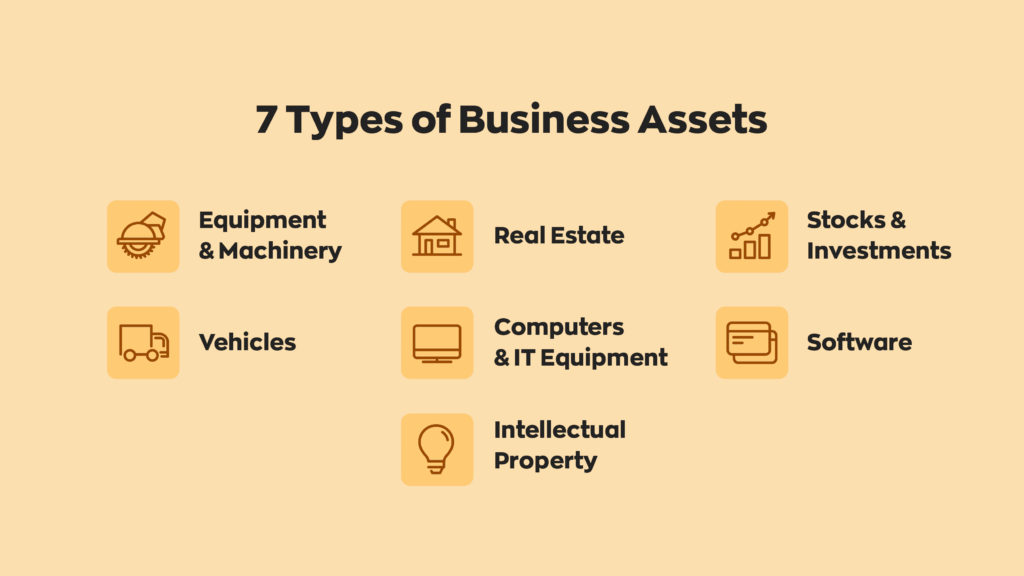
Another noteworthy business asset that we should address is intellectual property or IP. This includes things like business logos, brand names, concepts, and so on. Television shows, movies, novels, and other works of fiction are good examples of intellectual property.
As you can see, “business asset” refers to a lot of different things. Some of those things are physical objects, while others are not. This article will focus on physical assets because, well, you can’t put a barcode on something that doesn’t physically exist.
What is asset tracking?
As the name suggests, asset tracking refers to the practice of keeping track of assets while they’re on the move. Businesses do this for many different reasons. Some work with extremely expensive equipment, for example. Others may do so to track who has a piece of equipment and where they are. Typically, they achieve this by using an asset barcode.
Why should businesses track assets?
The biggest reason a business uses an asset barcode is to minimize errors, cut costs, and increase productivity. An asset barcode can tell you where the relevant piece of equipment is and who’s using it. This creates a digital trail that tells where valuable equipment is, and who’s currently responsible for it.
Asset tracking can also yield valuable data. The digital trail a barcode creates is useful in gauging activity across different areas, such as how often you use the asset, when it was last repaired, and what state it’s currently in. And if you run your business from multiple locations, you can more easily see the location of all of your assets at any given time. A company can use this data to allocate assets to areas that need them most.
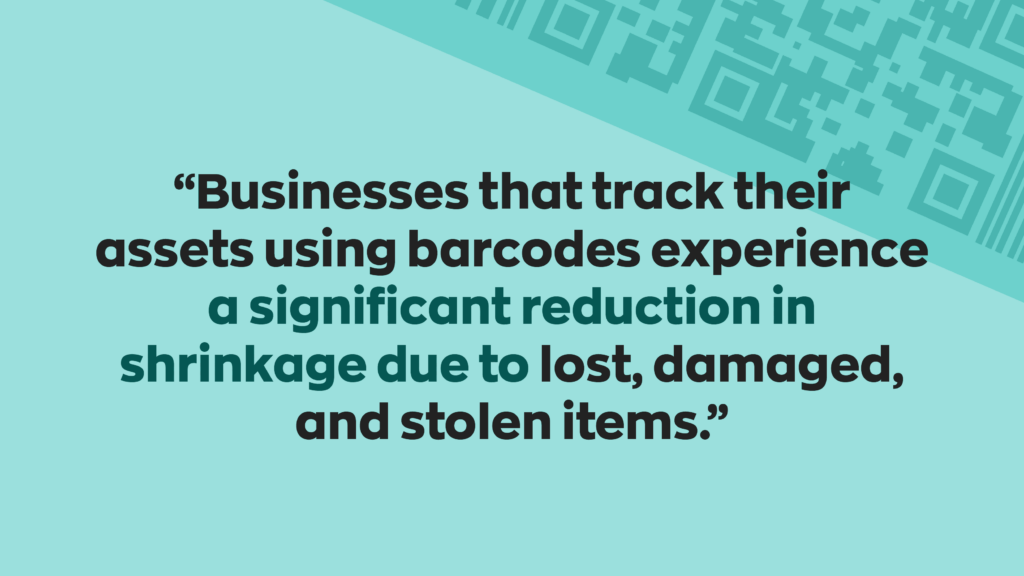
For example, say three employees need access to a specific business asset more than other employees. Barcodes would clearly show who has been using an asset more frequently and, therefore, let you plan accordingly.
This could be anything, but for the sake of this example, let’s say these employees work in field service and service different areas. In the same vein, let’s say that this business asset is an essential piece of equipment.
Employees 1 and 2 need regular access to the equipment because their areas of operation require it more frequently. Employee 3 still needs access to it, but much less frequently. If a business collects data over a long enough period, it can organize a schedule that suits everyone’s needs. This is useful when working with expensive equipment, as it can eliminate the need to purchase multiple units.
Companies can use the same data to allocate business resources and maintain a higher level of efficiency. However, achieving that can take time.
What type of businesses should use barcode asset tracking?
For the most part, every business should use it in some capacity. This is true even for online retailers. They need warehouses to store products, and often, warehouses require all sorts of equipment, such as forklifts and pallet movers. These are usually high-value equipment that may benefit from an asset barcode.
There are exceptions, however. There are business models that aim to reduce business assets to near zero. For example, drop shippers really only own their digital storefront. Companies that operate entirely online may also have little to no physical assets. Implementing barcode asset tracking doesn’t make much sense in these instances.
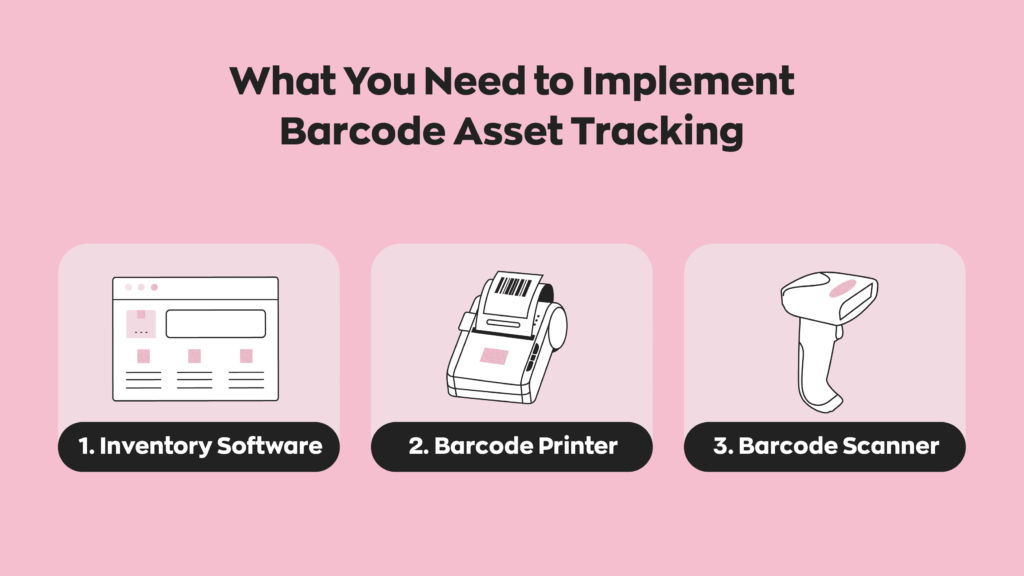
How do you implement barcode asset tracking?
Setting up a system might seem complicated, but it’s surprisingly simple. It involves using a business tool that most already use: barcodes. When they see a barcode, most people think of a price tag, but they can do much more for your business.
Of course, you’ll need some equipment to use asset barcodes. Chances are, though, you’ll already have most of this equipment. You’ll need a barcode printer, scanner, and the barcodes themselves. If you’re on a shoestring budget, you can use a free barcode font to create your barcodes—an office printer to print them and your cell phone to scan them.
However, good barcode software, like inFlow, simplifies using barcodes. We allow our users to create unique barcodes for their assets within a few clicks. You can design labels with our label designer and print them out right inside the app.
Once you have all the equipment, it’s just a matter of printing barcodes and placing them on the relevant assets. Make sure they’re unique to that asset or that category of asset. It’s important not to get mixed up! From there, sync the barcodes to assets and locations with whatever inventory system you use to create a digital trail as they move through your operations. You can even take this a step further by adding employee ID tags to the system to maintain responsibility. Then, employees can scan barcodes to log equipment out and when they send it in for repair.
Are there any downsides?
The only real downside to asset tracking is the need to maintain another system. As far as these types of business systems go, however, barcode asset tracking is relatively easy to implement and maintain. It helps that most businesses already use a barcode system; they have most of the necessities.
Best practices
Once you have everything: asset barcode, printer, barcode software, and so on, it’s time to start. What important things should you keep in mind once the system is up and running?
Categorize assets
Not every asset is… er, manufactured equally? Anyways. Not every asset is of equal value: some are more expensive than others or may have a different use case. Categorizing assets according to their use makes it easier for employees to get what they need and get to work.
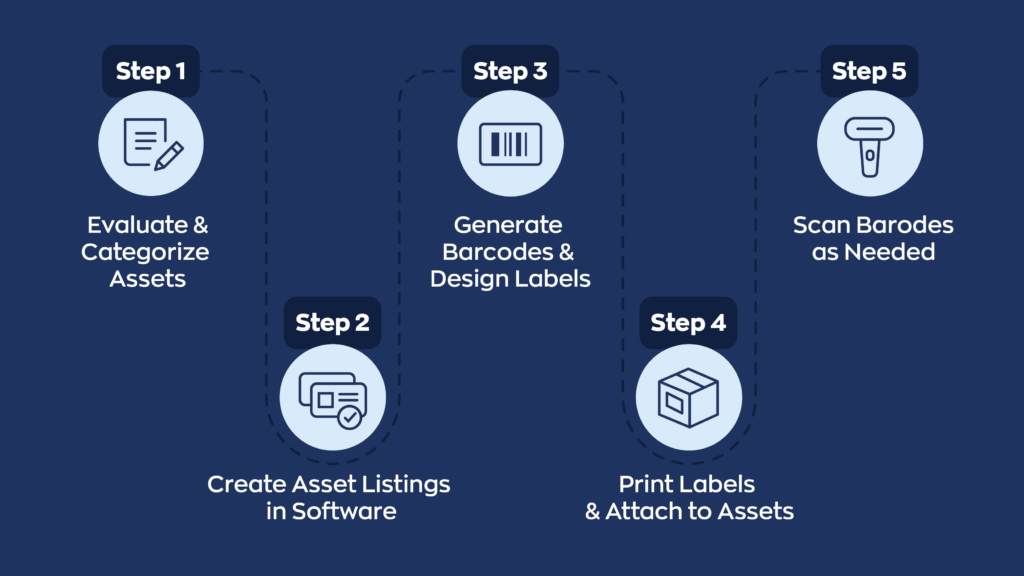
Store relevant information
An asset barcode can hold a surprising amount of information, but sometimes, too much information can make things more complicated than they need to be. Ensure you’re clear and concise and store information relevant to the asset. This is often something relevant to its appearance or specs, such as color, shape, model, or technical performance.
Place your asset barcodes with accessibility in mind
Barcode asset tracking involves a lot of barcodes– and a lot of scanning. This means it’s important to place barcodes where they’re easy to scan. If employees have to spend five minutes to disassemble something before scanning it, that’s a critical inefficiency.
Conclusion
And that’s it! Now you know what a barcode asset is and how an asset barcode tracks it. Even online retailers generally rely on a physical location of some sort, and tracking assets at those locations is crucial to keeping things running. Not just so things don’t go missing but also to increase efficiency and reduce operating costs.


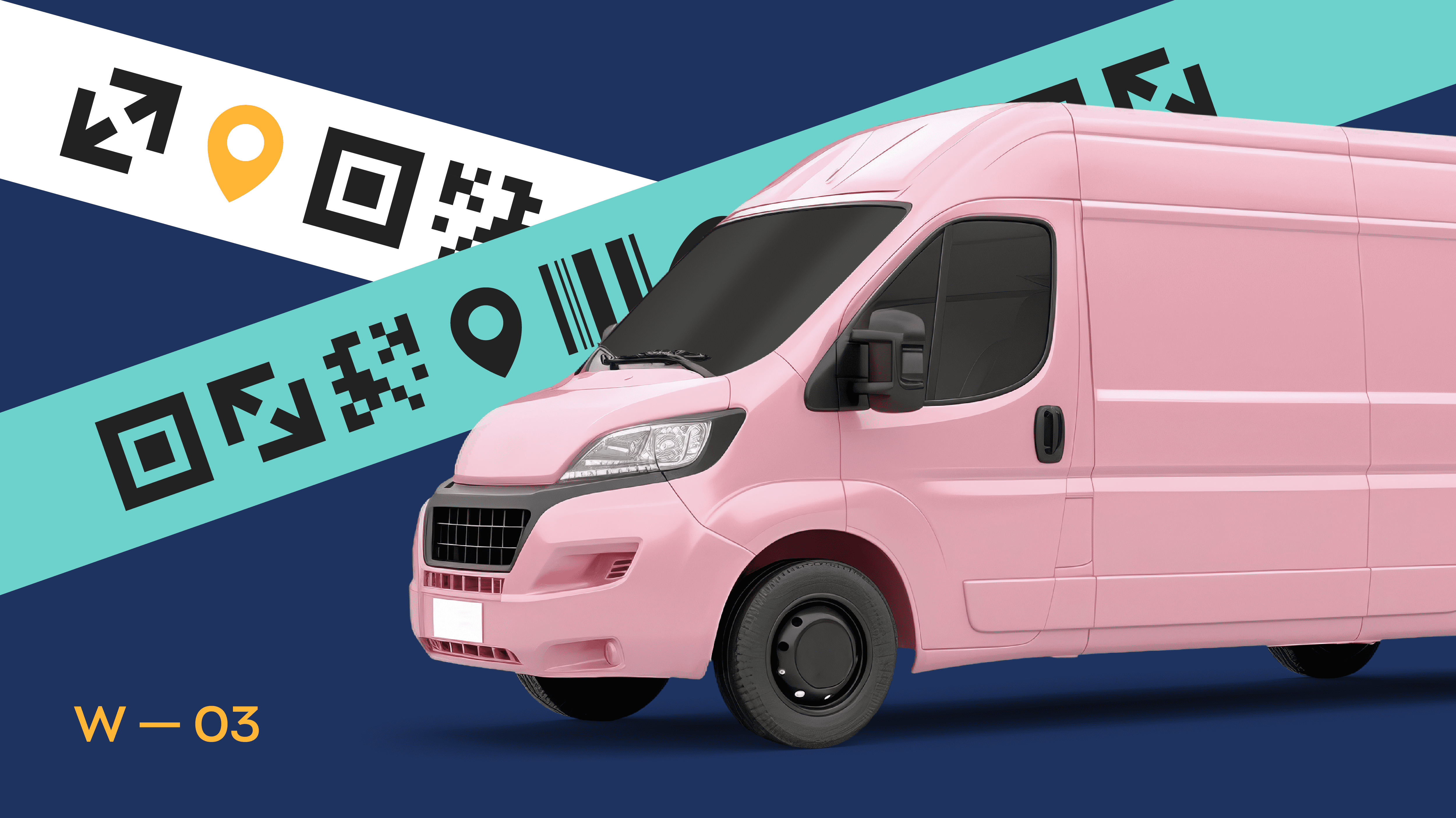
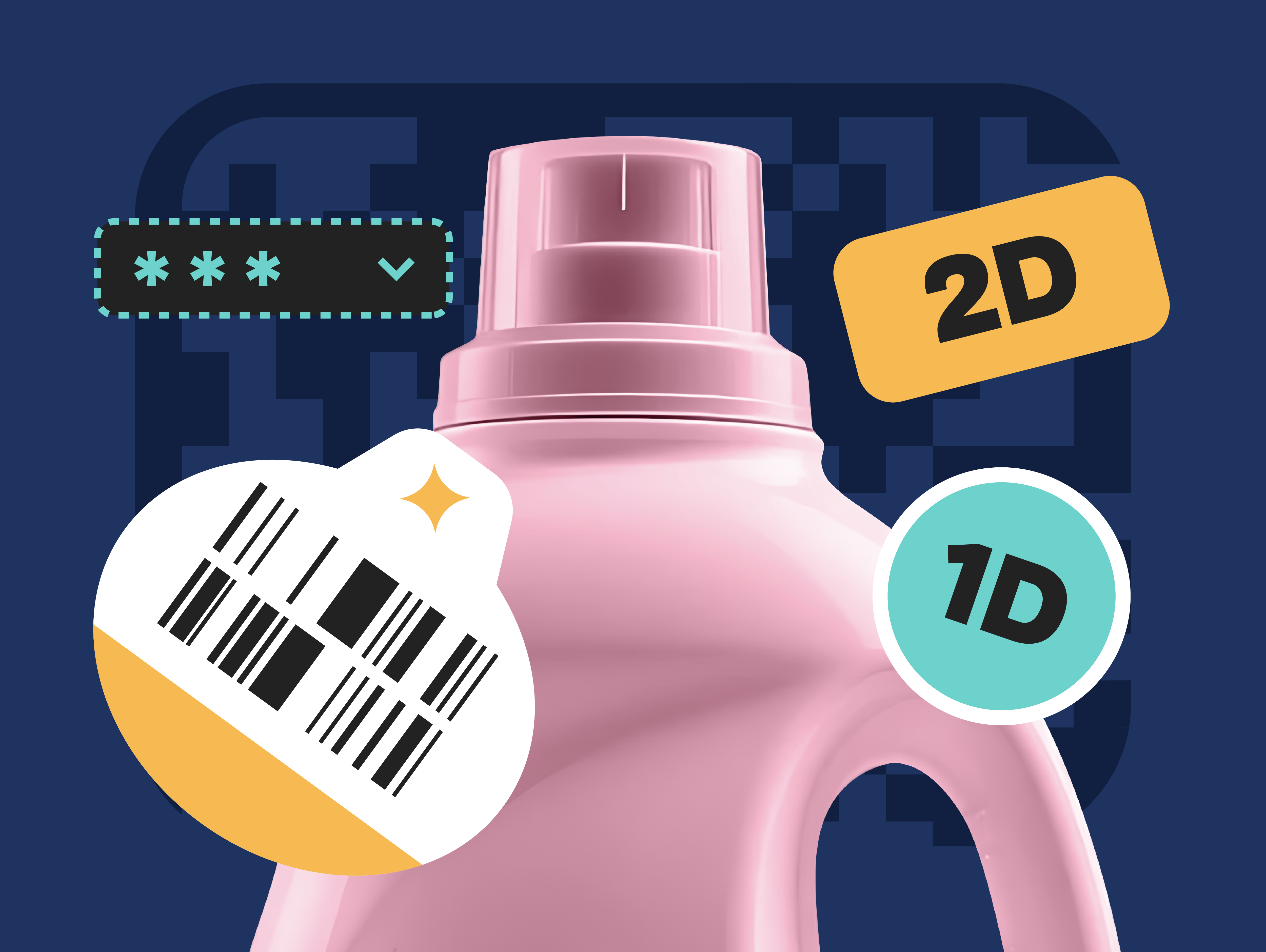
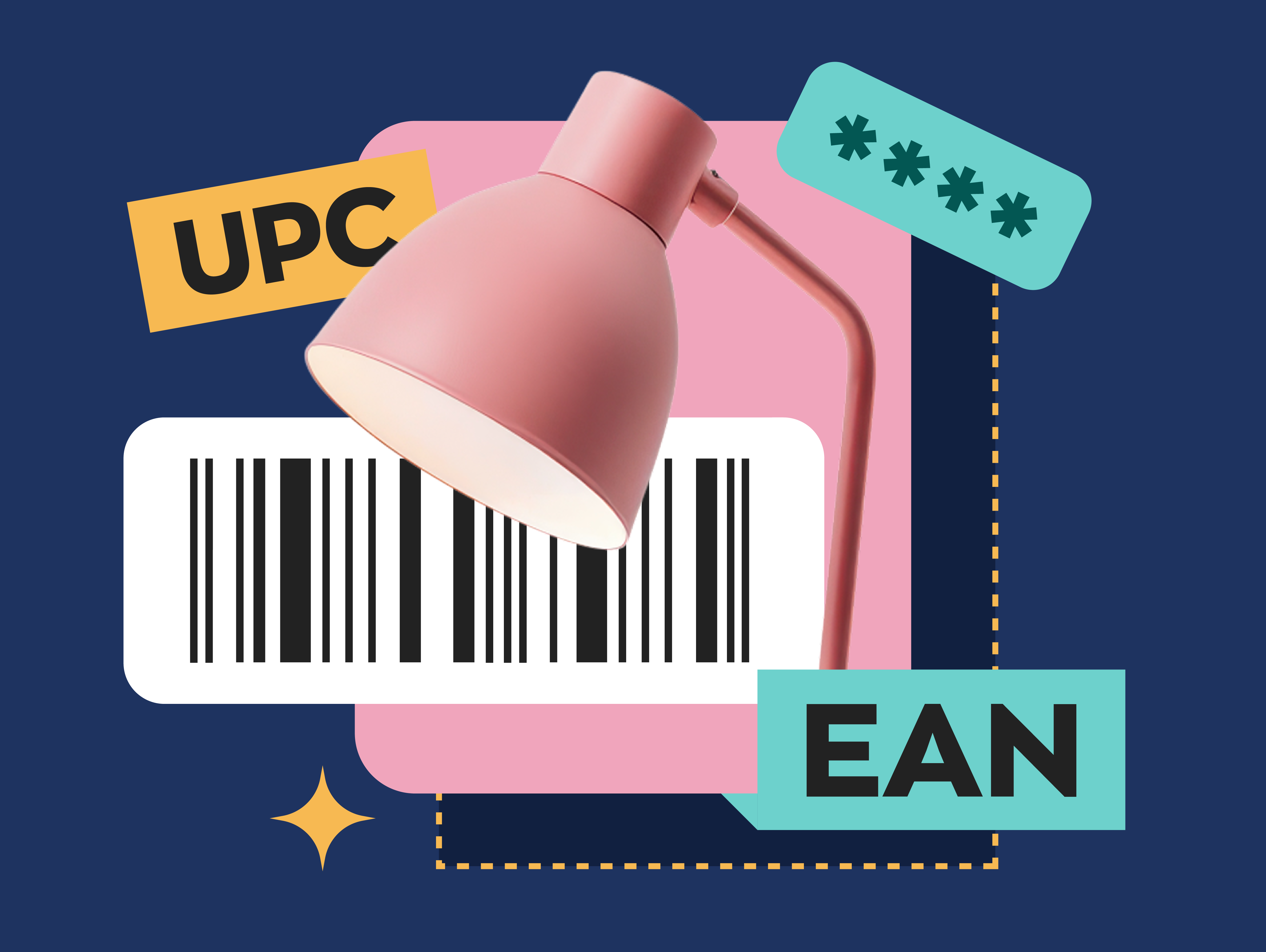
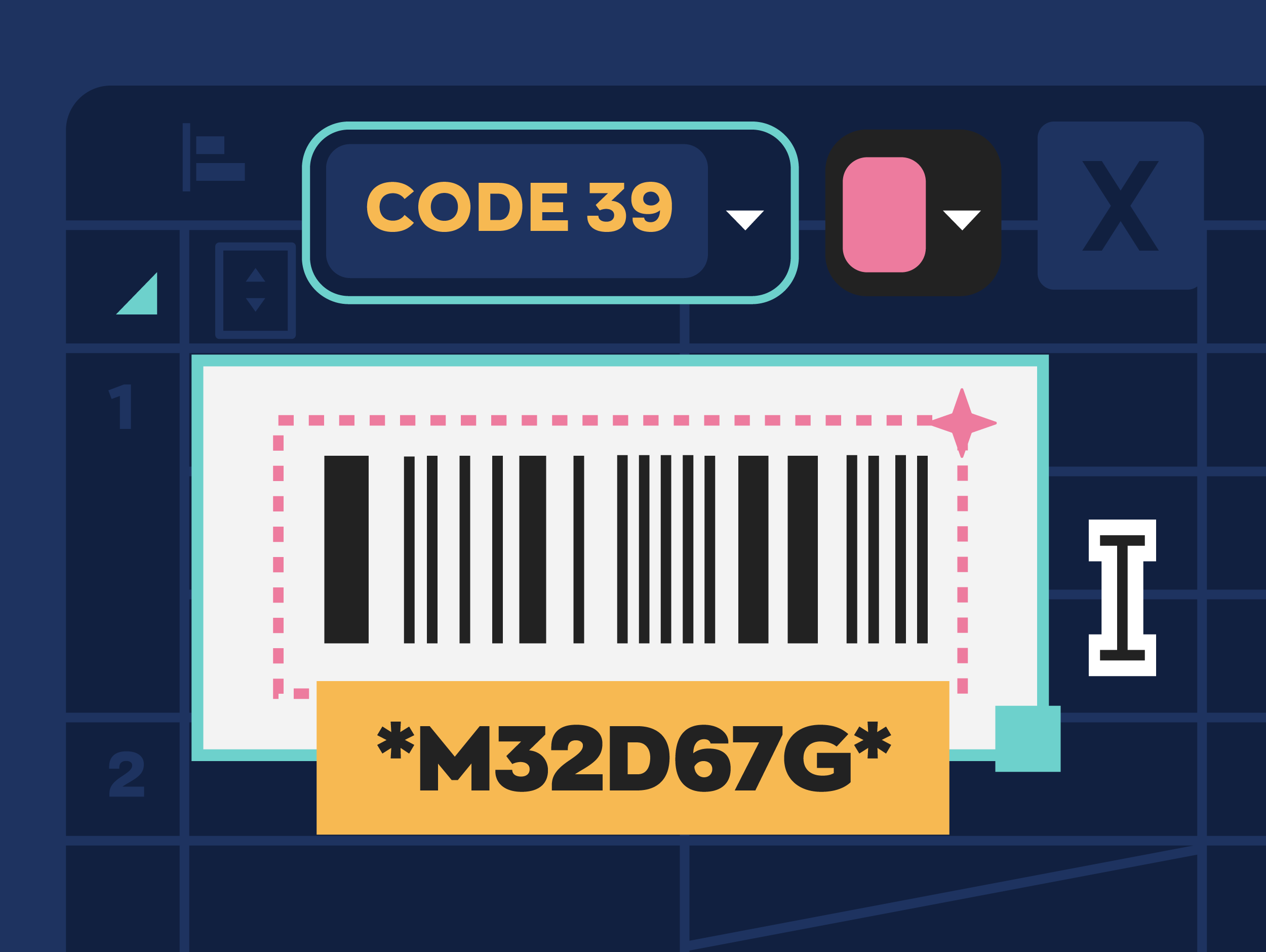
0 Comments